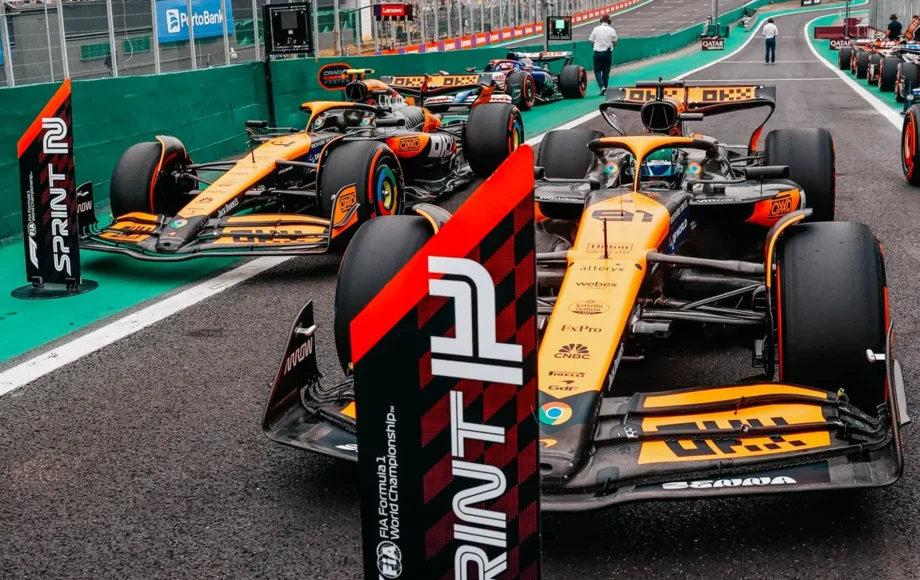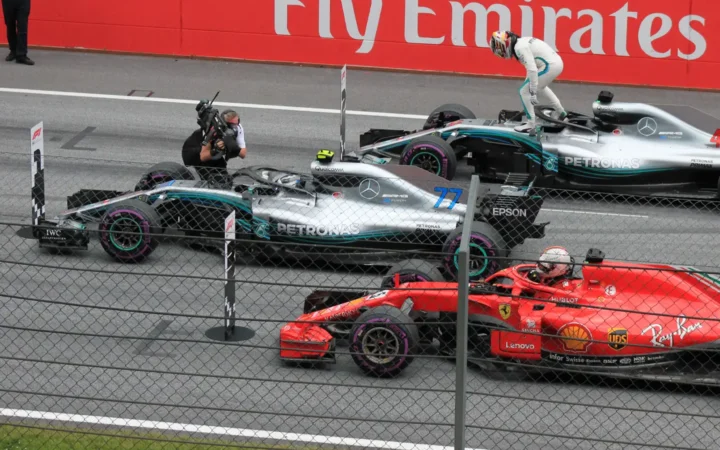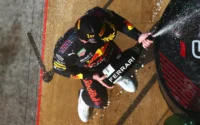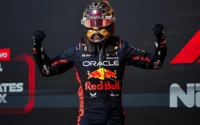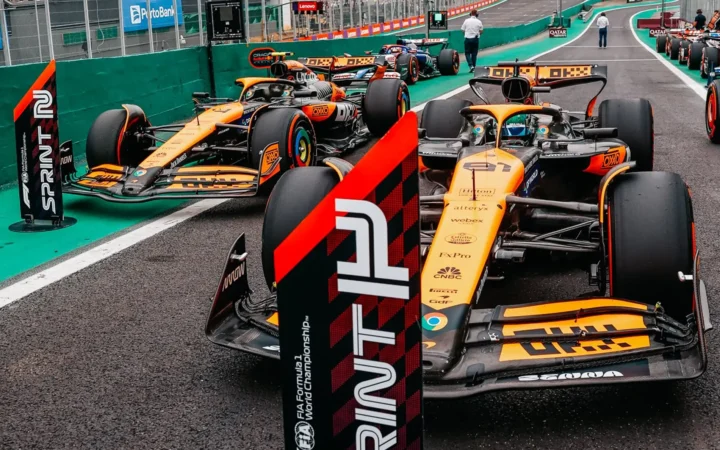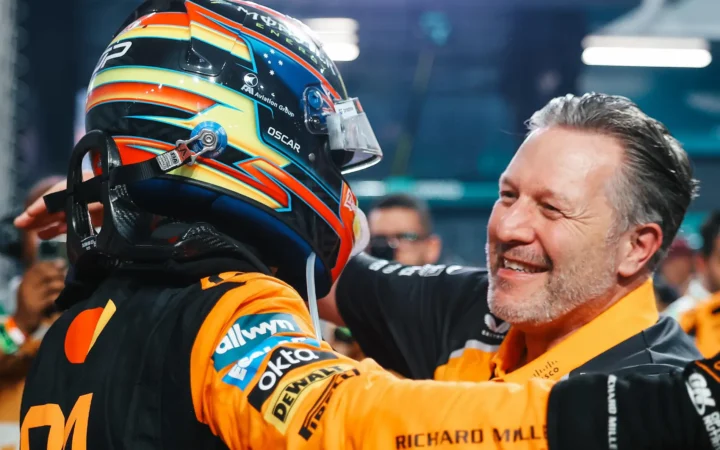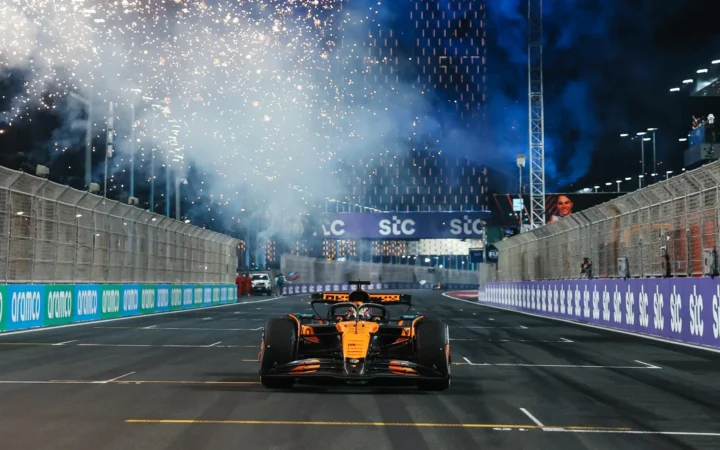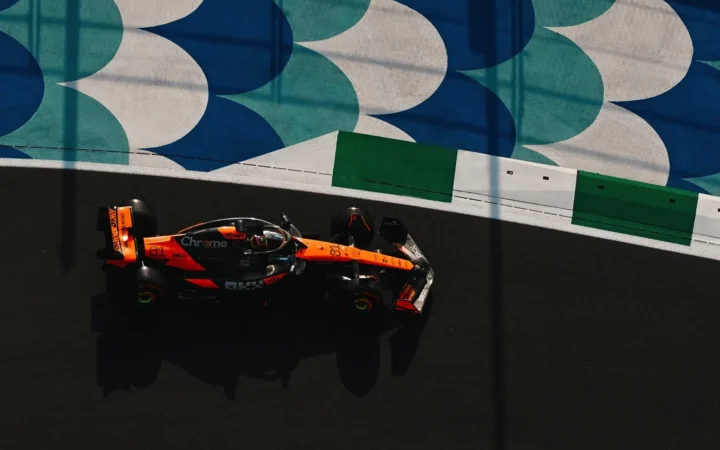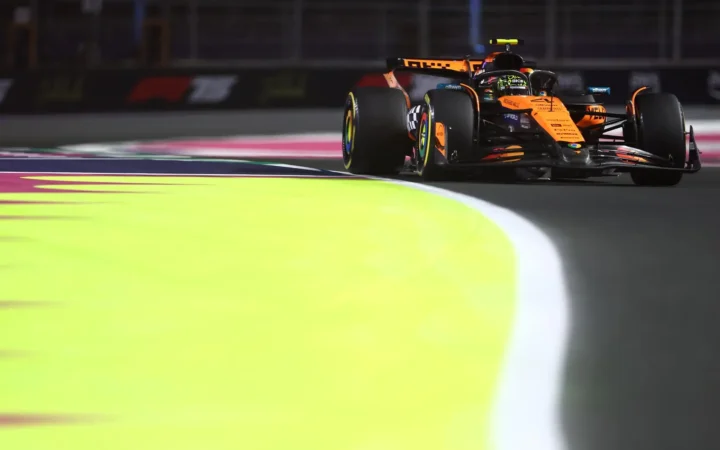Formula 1 qualifying is where the weekend’s drama begins. It’s not just about speed — it’s about precision, pressure, and positioning. This is the session that decides who grabs pole position and who’s stuck fighting through the field when the lights go out. Broken into three sessions — Q1, Q2, and Q3 — F1 qualifying is a test of pure pace, strategy, and nerve, with the fastest time lining up first on the grid come race day.
What To Know?
- F1 qualifying is a three-stage knockout format (Q1, Q2, Q3) where drivers fight for grid position — and ultimately, pole.
- Sprint weekends shake up the format, with Sprint qualifying on Friday and a short 100km race on Saturday, followed by the main race qualifying to determine the Sunday grid.
- Grid penalties and tyre strategy play a big role, with post-qualifying reshuffles and limited tyre sets shaping tactics.
- Lewis Hamilton holds the fastest official qualifying lap in F1 history, set at Monza in 2020 with an average speed of 264.362 km/h.
How Does F1 Qualifying Work?
F1 qualifying is no longer just a warm-up for the main Grand Prix. It’s become a mini thriller of its own. A shootout where every lap matters, mistakes are costly, and glory comes in the form of pole position. The current format, introduced back in 2006, is a three-part knockout battle: Q1, Q2, and Q3.
- Q1 (18 minutes): All 20 drivers (that’ll be 22 from the 2026 F1 season) head out to set lap times. The slowest five get the boot — P16 to P20 locked in.
- Q2 (15 minutes): The remaining 15 drivers go again. This round is about getting into the top 10. Fall short, and you’re starting from 11th or worse.
- Q3 (12 minutes): This is it — the fight for pole. The top 10 push their cars to the absolute limit. The fastest lap earns P1, while P2 secures a spot on the front row.
Each session resets the playing field, so no carrying lap times over. Tyre strategy, track evolution, and timing a final flying lap just right are crucial in securing the best grid slot for the race.
F1 Qualifying Q1
Q1 is the first qualifying session of the weekend, where the competitive order begins to take shape. All 20 cars (22 cars from 2026) head out on track for 18 minutes. It might be the first session, but this is where track evolution, traffic, and split-second decisions can make or break a weekend. Drivers are fighting to avoid elimination, and with only 15 spots up for grabs in Q2, there’s no room for error. With 20+ cars on track at any one time, it’s down to the teams to get their drivers out in clean air and to make them aware not to block other drivers on a fast lap, which could result in a penalty.
Bottom line: The five slowest drivers are out, locked into P16–P20. Ask any rookie, midfield team, and on occasion, the best drivers on the grid — getting caught in traffic or mistiming your run here can end a Saturday early.
F1 Qualifying Q2
Q2 is the second qualifying session, where the sharp end of the field starts to reveal its hand. 15 drivers. 15 minutes. But only 10 times get into Q3. The pressure intensifies, the margins narrow, and strategy becomes paramount. Teams weigh risk versus reward — sometimes even sacrificing a perfect Q2 to save tyres for Sunday.
This session often delivers heartbreak for midfielders who were quick in Q1, only to fall short by tenths as the top-field teams dial in their cars further. Every lap counts—every tenth of a second matters.
Miss the cut? A start in P11–P15 — a decent grid slot to play a strategic drive for points on Sunday, but not ideal if teams are chasing podium places. Still, it’s not impossible in the right car.
F1 Qualifying Q3
This is the final qualifying session, Q3 features just 10 drivers, 12 minutes, and a shot at pole position. Q3 is the ultimate test of one-lap performance where legendary drivers deliver, under the lights or in the heat of the day, to clock the fastest time.
The top teams unleash everything here. Light fuel, fresh softs, DRS wide open — and if the paddock has turned up on a street circuit, nerves of steel from drivers. The reward? Pole position. Bragging rights. And the best starting slot on the grid for race day.
What’s at stake: A front-row start and a psychological edge going into Sunday.
F1 Qualifying Rules: What Happens After the Chequered Flag?
On occasion, the job’s not done even after the chequered flag drops in Q3? In Formula 1, qualifying might set the grid, but rules and penalties can shake it up just as quickly.
After qualifying ends, drivers and cars are scrutinised, where the former can be hit with grid penalties for two main reasons:
- On track infringements – Blocking another car on a hot lap, ignoring yellow flags, or exceeding track limits one too many times.
- Technical violations – From illegal car parts, the need for power unit changes, or exceeding component limits (like gearboxes or engines). F1 has seen them all.
A good example is if the pole-sitter gets a five-place grid drop — they’re starting from P6 instead. Everyone behind moves up a spot, and the whole grid reshuffles accordingly. It’s not uncommon to see dramatic shifts overnight due to post-session investigations by the FIA and race stewards, while teams play the counterargument game.
Once penalties are confirmed, the final grid is locked in. There may even be further changes when teams might decide a driver will start from the pit lane. But at this point, there are no more changes and no appeals. And sometimes, it completely alters the storyline heading into Sunday, or they can have detrimental Championship-winning consequences.
Tyre Rules in F1 Qualifying
Tyre strategy used to be a bit of a chess match in F1 qualifying, especially for drivers aiming to secure a spot in the top 10. Until the 2021 season, if you made it into Q3, you had to start Sunday’s race on the same tyre compound you used to set your fastest lap in Q2. That meant teams were constantly weighing performance vs. long-game strategy.
In some cases, it was even smarter to qualify P11 than P10 — because you got a free tyre choice and the chance to go long on the first stint.
However, since the 2022 season, that rule has been scrapped. Now? Everyone starts with a free tyre choice on race day, regardless of their qualifying position.
This change has levelled the playing field, allowing for bolder strategies across the grid. Teams now focus on pure performance in qualifying — no tyre-saving games, just flat-out speed.
How Many Laps Do F1 Drivers Get in Qualifying?
Unlike the race, qualifying doesn’t come with a fixed number of laps. In F1, drivers (or rather the teams) will decide how many laps they run during each session — Q1, Q2, and Q3 — based on tyre strategy, track conditions, and outright pace.
Teams will, of course, need to consider that tyre allocation is limited, and they must save fresh rubber for the race. Instead of endlessly pounding around the circuit, drivers typically prioritise quality laps over quantity.
On average, a driver runs:
- 1–2 flying laps per session, sometimes with a cooldown lap in between.
- More laps in Q1 when track evolution is biggest and traffic is heavier.
- Fewer laps in Q3 to preserve tyres and time a single, perfect pole attempt.
Every lap costs tyre life, and every set counts over a long race weekend. That’s why the best drivers and team strategists find the sweet spot between pushing for pole and saving enough on tyre choice for the race.
Qualifying Lap Types: Out-Lap, Flying Lap & In-Lap Explained
If you’re new to F1, you’ll often hear commentators throw around terms like “out-lap” and “flying lap.” Here’s what they mean:
- Out-Lap: This is the lap where a driver leaves the pits, warms up their tyres and brakes (bringing them into the optimal performance window). No time is set — it’s all about prep.
- Flying Lap: This is the push lap. This timed lap is where a driver goes all-out, pushing for their fastest time to secure a grid position.
- In-Lap: After a flying lap, the driver usually heads back to the pits — that’s the in-lap. It’s done at a lower speed to cool things down, save the car, and protect the tyres.
Grasping how and when to do these laps — especially in changing conditions — is part of what separates the good from the great in F1 qualifying.
F1 Sprint Qualifying
After successful trials in 2021 and 2022, F1 introduced Sprint races to add an extra layer of action before lights out on Sunday’s main Grand Prix. A short-format race that has added a twist to the traditional Grand Prix schedule. Sprint races are now a permanent fixture on the F1 calendar at select weekends, but there are key differences that shift the format of the traditional race weekend.
Sprint Weekend Breakdown
- FP1: A single free practice session on Friday for teams and drivers instead of the normal three that would be spread over Friday and Saturday.
- Friday: Sprint qualifying session, setting the grid for Saturday’s Sprint race, that replaces the slot that FP2 would usually fill.
- Saturday: The Sprint — a flat-out 100km race (roughly 25–30 minutes) that replaces a slot that FP3 would have filled. The main race qualifying then takes place after the Sprint race.
- Sunday: The full-length Grand Prix.
| Day | First Session | Second Session |
|---|---|---|
| Friday | FP1 | Sprint Shootout – SQ1, SQ2 and SQ3 |
| Saturday | Sprint Race | Grand Prix Qualifying – Q1, Q2 and Q3 |
| Sunday | Grand Prix | n/a |
Points on the Line
Sprint races aren’t just about grid positions — they also offer championship points. The top 8 finishers score points, with P1 earning 8 points and P8 earning 1 point. That’s a significant upgrade from the old system, where only the top three earned anything.
| Position | Points |
|---|---|
| 1st | 8 |
| 2nd | 7 |
| 3rd | 6 |
| 4th | 5 |
| 5th | 4 |
| 6th | 3 |
| 7th | 2 |
| 9th | 1 |
Sprint weekends bring more action, more risk, and more reward, giving fans a second race-day vibe and shaking up strategies across the board.
Formula One History Recommends
What’s the fastest F1 Qualifying Lap Ever
In a sport defined by milliseconds, one lap in the 2020 season reset the benchmark for sheer speed. At the Temple of Speed — Monza — Lewis Hamilton etched his name into F1 history yet again with the fastest official qualifying lap ever recorded in Formula 1 with a time of 1:18.887 and an average speed: 264.362 km/h (164.267 mph)
Driving with a rocket of a Mercedes, Hamilton stormed to his 94th career pole, smashing the standing record and proving again why he’s one of the sport’s all-time greats.
But before Hamilton’s Monza masterpiece, there was Juan Pablo Montoya.
Back in 2004, during F1’s V10 era, Montoya threw down a lap that would live in legend. Driving for Williams-BMW, he clocked a 1:19.525 at Monza — blisteringly quick, with an average speed of 262.242 km/h (162.950 mph).
His lap was over half a second faster than second-place qualifier Michael Schumacher — a rare feat in any era, especially one that Ferrari and Schumacher dominated.
Montoya’s Monza lap was raw F1 at its peak: screaming V10s, no lift, and everything on the edge. Though he didn’t win the race (Schumacher did), that pole lap remains one of the most celebrated in the sport’s history.
Seen in:

